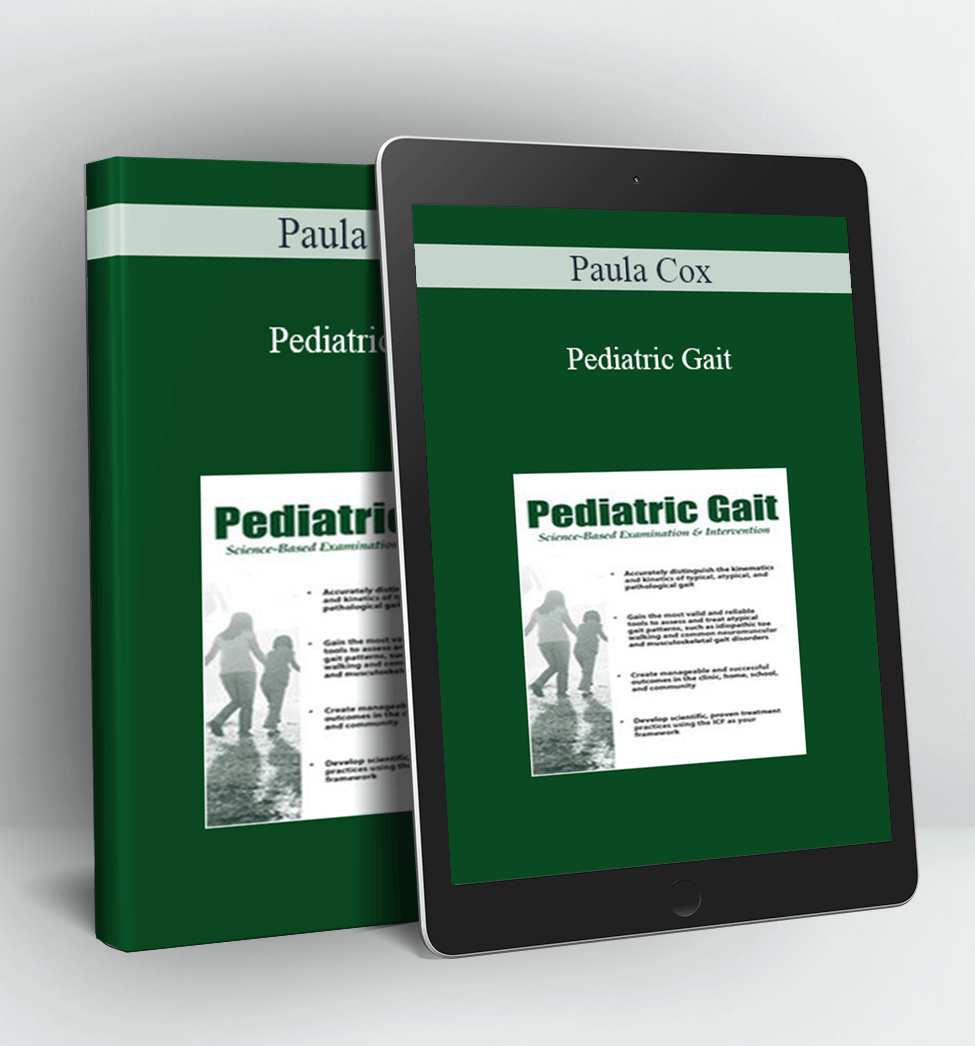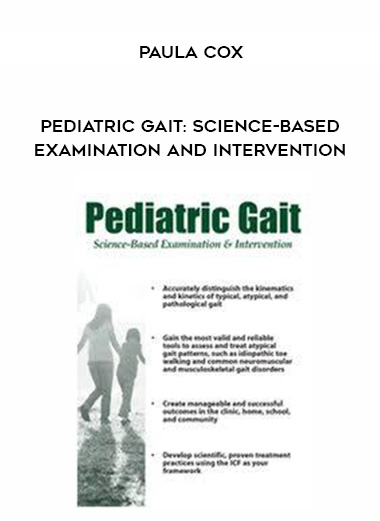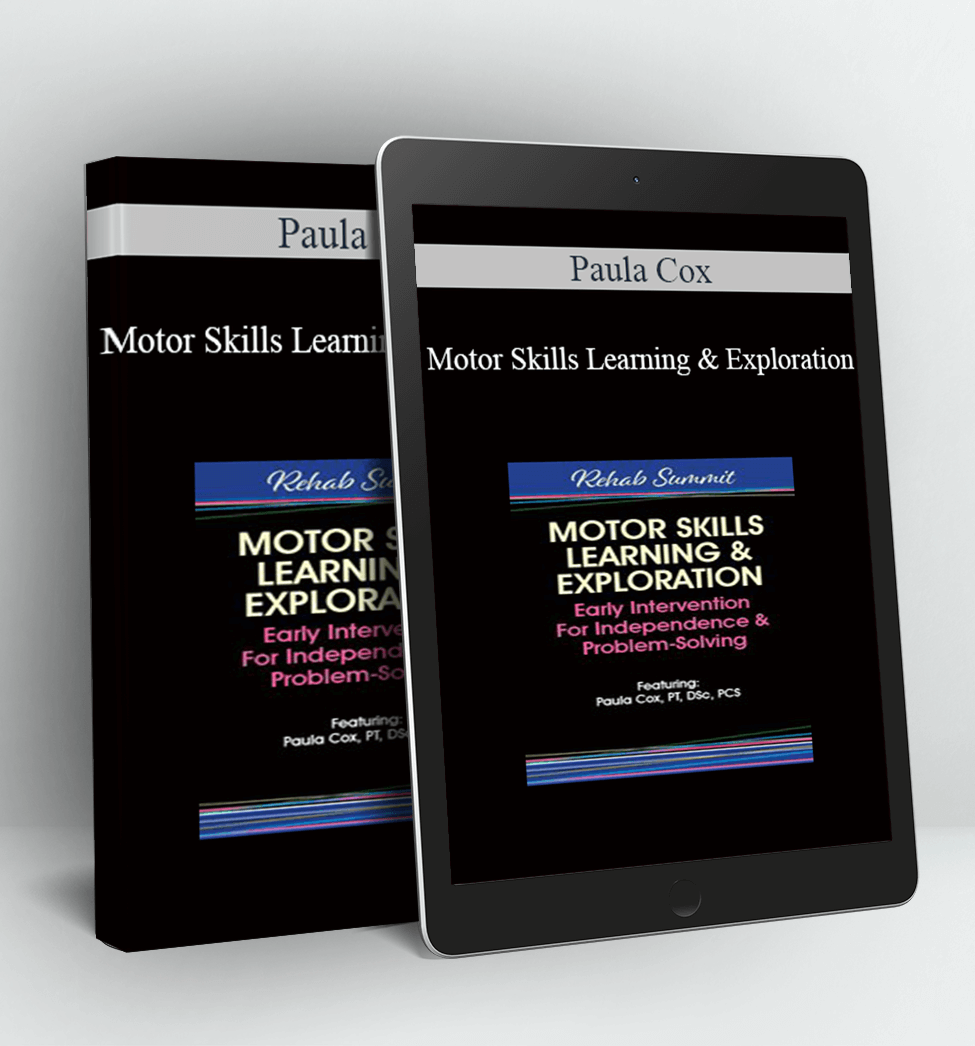
Pediatric Gait – Paula Cox
- Faculty:
- Paula Cox
- Duration:
- 5 Hours 22 Minutes
- Format:
- Audio and Video
- Copyright:
- Nov 20, 2014
Description
Interventions with Pediatric Gait: What Works & What Doesn’t
For those who assist pediatric patients with gait, you know firsthand the crucial role that autonomous locomotion has on the lives of infants and children, especially in regards to participating with their peers. However, are you utilizing scientific practices in the examination, evaluation, and treatment of the children with whom you work? Are you using the latest and most appropriate interventions for pediatric gait disorders based on the evidence?
Find out how you can improve your care with children’s gait in this recording. Skillfully explore the science of pediatric rehabilitation through the presentation of the ICF as a framework for pediatric physical therapy practice. Watch and learn as the group discusses the components of typical, atypical, and pathological gait. In addition, you will evaluate the most reliable and evidence-based tools to examine and assess skill levels and progress for children with commonly seen gait disorders. Return to your practice with the proper tools to move from an intuitive-based practice to a science-based practice, resulting in better outcomes for your clients.
Handouts
| Manual – Pediatric Gait (10.99 MB) | 86 Pages | Available after Purchase |
Outline
KINEMATICS & KINETICS OF TYPICAL, ATYPICAL, & PATHOLOGICAL GAIT
- Components of gait
- Alignment of joints during gait
- Force production and gait efficiency
INTERNATIONAL CLASSIFICATION OF FUNCTION, DISABILITY, & HEALTH (ICF)
- Review components of ICF
- ICF as a framework for pediatric practice
- Moving toward scientific practices
MEASUREMENT TOOLS
- Psychometrically sound measurement tools
- Valid and reliable measurement tools to assess gai
OUTCOME DEVELOPMENT
- Using ICF to inform outcome development
- Developing functional and measurable outcome
INTERVENTION
- What is evidence-based practice
- Review presently used interventions for neuromuscular and musculoskeletal gait disorders
- Neuroplasticity and motor learning, and their importance in intervention
- Research that supports or refutes effectiveness of interventions for common pediatric gait disorders
- Interventions for musculoskeletal and neuromuscular gait disorders with clear supportive evidence
OUTCOME MEASUREMENT
- Review need for psychometrically sound measurement tools
- Review valid and reliable outcome measurement tools
CASE STUDY
- Assessment
- Intervention
- Outcome
Faculty
Paula Cox, PT, DSc, PCS Related seminars and products: 3
Paula Cox, PT, DSc, PCS, is a board-certified, pediatric PT with over 35 years of experience in pediatric rehabilitation. She is a member of the APTA, the APPT, and the IL PT Association. Dr. Cox served on the APPT’s NICU to EI transition work group. She is committee chair for the APPT course Advanced Clinical Practice in Pediatric Therapy, an ongoing APPT course that investigates current theories and EBP across pediatric settings. Dr Cox presents the EI segment for this course. She operates a private pediatric practice in the Chicago area and provides ongoing mentoring to PT’s in 2013 from the University of Oklahoma. Her doctoral research examined the use of a robotic scooter to provide early autonomous locomotion for infants with Down Syndrome.
Speaker Disclosures:
Financial: Paula Cox maintains a private practice. She is an adjunct professor at Midwestern University. Dr. Cox receives a speaking honorarium from PESI, Inc.
Non-financial: Paula Cox has no relevant non-financial relationship to disclose.
Access Download Pediatric Gait – Paula Cox right now!
Delivery Method:
After your purchase, you’ll get access to the downloads page. Here, you can download all the files associated with your order.
Downloads are available once your payment is confirmed, we’ll also send you a download notification email separate from any transaction notification emails you receive from Coursedownloads.







